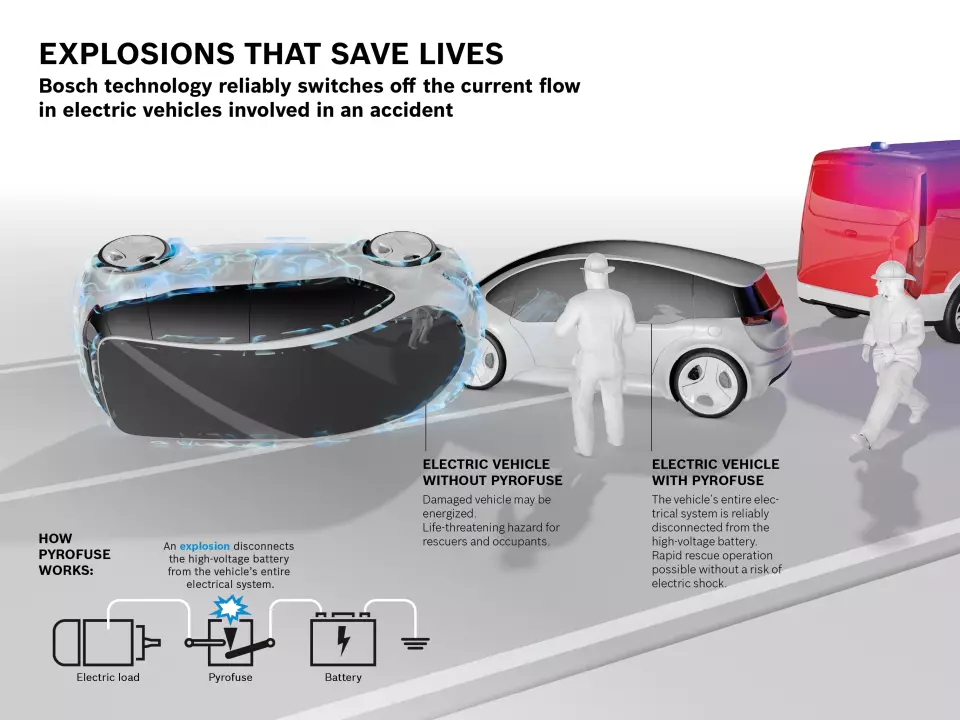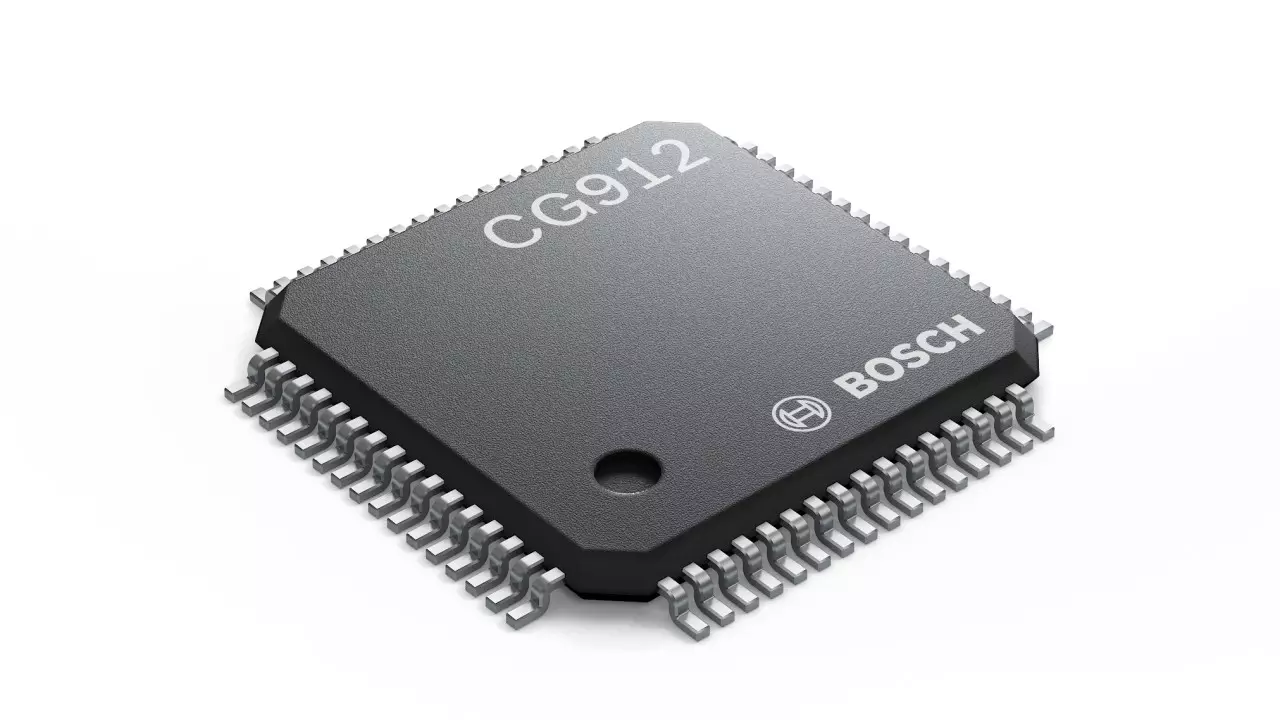Mini-explosions to make electric and hybrid cars safer? It sounds crazy, but using small pyrotechnic devices for safety equipment is nothing new in the automotive world — airbags, remember how they work?
Bosch has taken the same principle to increase the safety of occupants and security forces in the event of an electric car accident.
It's easy to see why. The risk of electrocution is real, whether for occupants or security forces, if the high voltage cables are damaged and come into contact with the structure or body.

It is worth remembering how high the voltage of the hybrid and electric vehicles we have on the market is, around 400 V and 800 V. Much higher than that of domestic sockets we have at home (220 V). It is essential that, in the event of an accident, the electrical current is immediately cut off.
Subscribe to our newsletter
The Bosch system thus uses microchips capable of deactivating the current almost immediately in the event of an accident. Like? These are part of a system with a pyrotechnic safety switch that Bosch called “pyrofuse”.
This system uses information from the airbag sensor that, if it detects an impact, the mini-devices — no more than 10 mm by 10 mm, and weighing no more than a few grams — trigger the “pyrofuse”.

This causes a series of (very) small explosions that push a wedge towards the high voltage wiring that exists between the battery and the electronic control unit, cutting the current between the two. Thus, says Bosch, “the risk of electric shock and fire is eliminated”.
Although this solution represents an advance in terms of safety, the truth is that there is still a potential risk of fire if the batteries are damaged by the impact.
